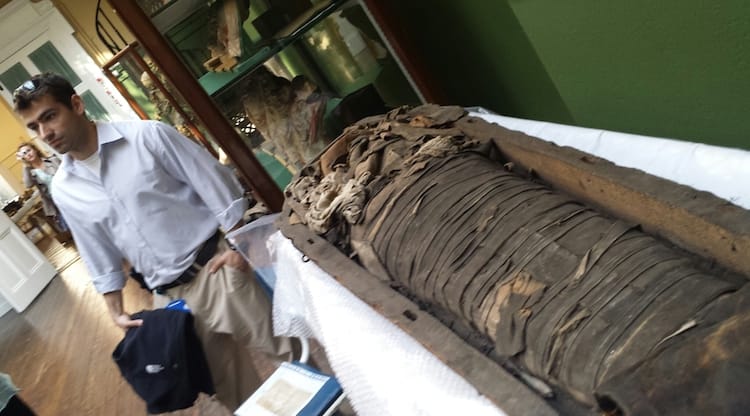What’s the best way to tell area residents about plans for a new asylum shelter nearby?
The government should tell communities directly about plans for new asylum shelters, some activists and politicians say.
Illustrator John Rooney loves fiddly details. That’s one of the reasons he was drawn to the tale of Maurice the Mummy. All the bandages.

Illustrator John Rooney loves the fiddly details. That’s one of the reasons why, when tasked with coming up with a comic-booky guide to Marsh’s Library, he was drawn to the tale of Maurice the Mummy. All those bandages.
A print of his drawing of Maurice, I Want My Mummy!, is now hanging on the wall of the library, along with several others from the glossy guide to the institution’s history that he drew. The current plan is to keep them on display until the end of December.
I Want My Mummy! is veiny-eyed, intricate, creepy, and fun. It also has a “fascinating” story behind it, Rooney said; that’s another reason he honed in on Maurice the Mummy.
In November 1888, the then keeper of Marsh’s Library, Reverend Dr George T. Stokes, pulled open a cupboard and found the remains of a mummy. To this day, nobody is quite sure who the mummy was, and where they came from.
An Archeology Ireland article from 2014 sets out a few theories. One contemporary, Trinity College Dublin Professor Edward Halleran Bennett, suggested that it might have been brought to Dublin from Egypt by an unnamed somebody “who was known to have travelled in Egypt, and to have been interested in such curiosities”.
The same article offers two candidates: English prelate and anthropologist Richard Pococke and clergyman-orientalist Robert Huntington. Both travelled in the Middle East.
The latter seems to be the favourite of the article. Huntington worked for the Levant Company, which often shipped mummy parts to Britain. Why? In the seventeenth century, when Huntington was around, there was a trade in mummy parts for medicine.
Cannibalism was all the rage. Blood, human fat, skulls – different parts for different ailments. The logic behind the treatment? Some blame the homeopaths and an era when the “like cures like” mantra had free reign.
We don’t know, though, that this mummy was shipped to Dublin for medicinal ends. It’s just educated speculation.

When it was discovered in 1888, the mummy seems to have been passed along to Trinity’s Anatomy Department, where Bennett pored over it. And then little was heard of it for a while. Until, a few years ago, it was dug out again from where it had been kept propped against a wall in an alcove under the banked seating of an old lecture theatre.
Today, Maurice the Mummy is still in the care of Trinity College Dublin. Or rather, most of him is. We don’t where his head is.
There’s a nod to that in the Paddington-Bear-style label pinned to the mummy’s head in Rooney’s illustration: “IF FOUND — PLEASE RETURN TO: MARSH’S LIBRARY.”
Rooney couldn’t help but include an evil eye, though. He thought it would make the drawing creepier, the idea “that the mummy could still be out there somewhere watching . . . even though the head was actually missing!” he said in an email.
Rooney’s illustrations at Marsh’s Library are pitched for kids. So borrow a kid and go see them.
You can see John Rooney’s I Want My Mummy! in the exhibition “Scary (and Hairy): Tales From Marsh’s Library” at Marsh’s Library. It is open: Monday, Wednesday, Thursday, and Friday from 9.30am to 5pm; and Saturdays from 10am to 5pm. It is closed on Sundays, Tuesdays, and bank holidays.